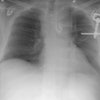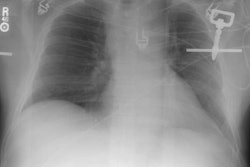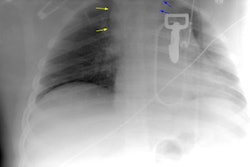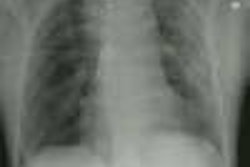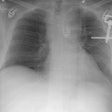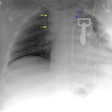General:
Chest trauma accounts for approximately 4-12% of deaths resulting from trauma. Most chest trauma seen in civilian populations is blunt chest trauma (63-78%) and most blunt chest trauma is the result of motor vehicle accidents, while falls account for between 10% to 17%. The presence of chest wall trauma is a marker for severe injury- rib fractures are found in 52% of patients with documented blunt cardiac injury versus 27% without cardiac injury [1]. Additionally, mortality doubles in patients with three or more rib fractures [1]. The presence of a first rib fracture is widely held to be indicative of severe chest trauma, however, the incidence of aortic injury is probably not increased in these patients [1].Pneumothorax: Pneumothorax occurs in almost 40% of patients with blunt chest trauma. The diagnosis of pneumothorax may be extremely challenging in trauma patients as they are frequently supine and have a number of external devices which may overlie the chest. Between 10-50% of pneumothoraces in these patients will be identified only on CT exams, and it is important to note that up to 75% of these will ultimately require treatment with tube thoracostomy because they enlarge and become symptomatic (especially in patients placed on mechanical assist ventilation).
REFERENCES:
(1) Chest Surg Clin N Am 1997; The fractured rib in chest wall trauma. 7 (2) May: 239-260
(2) Radiographics 1998; Kuhlman JE, et al. Radiographic and CT findings of blunt chest trauma: Aortic injuries and looking beyond them. 18: 1085-1106
